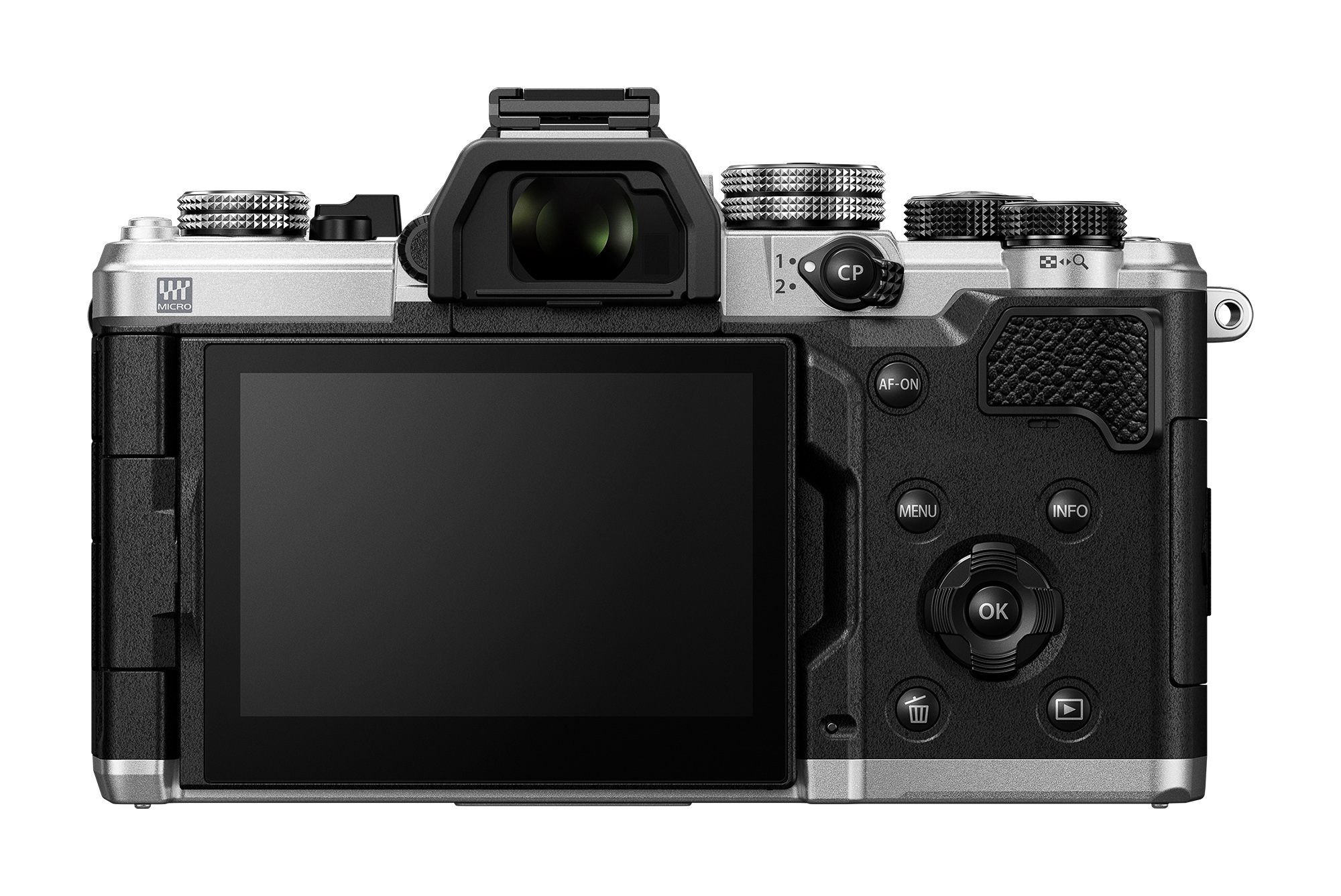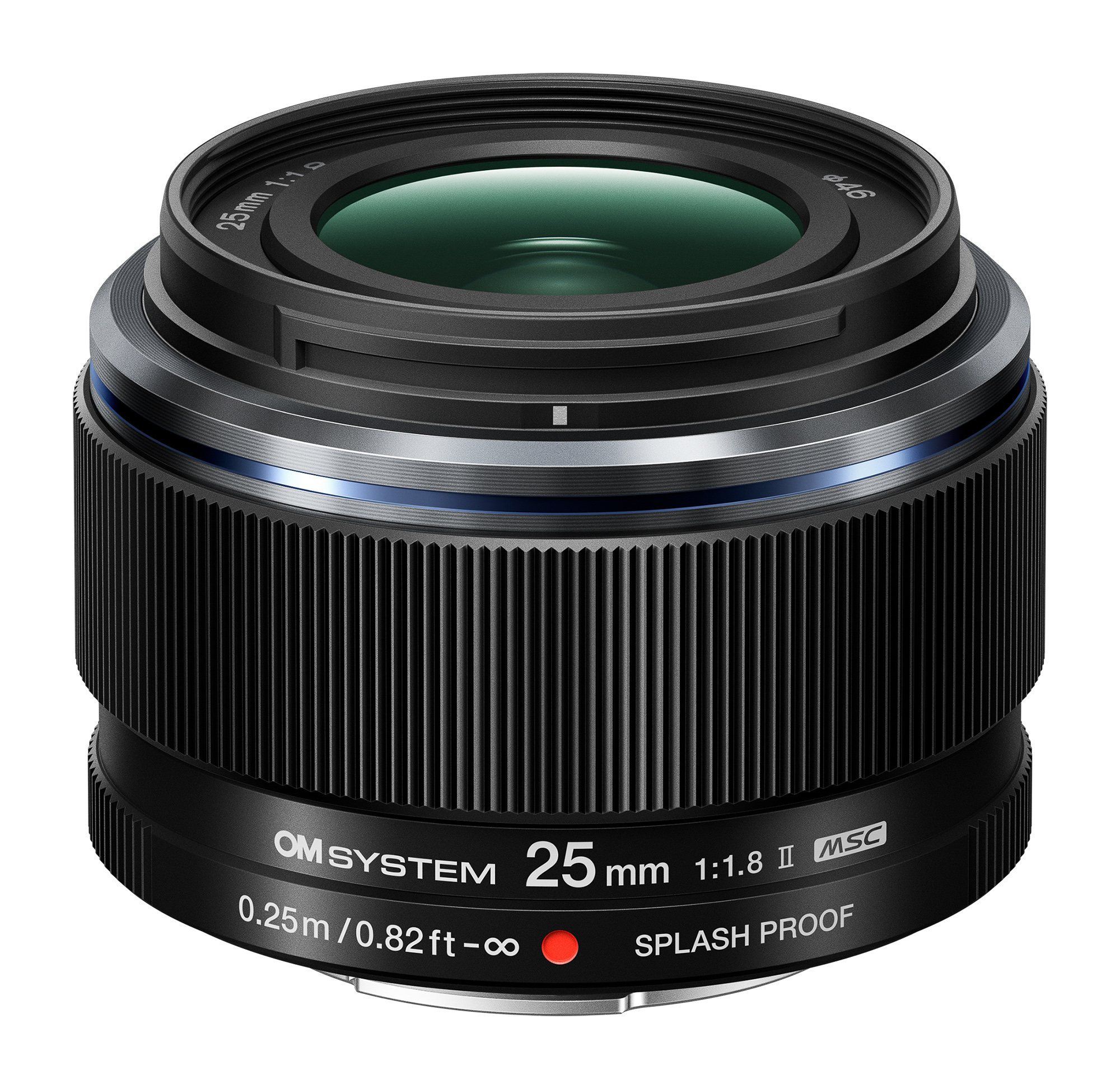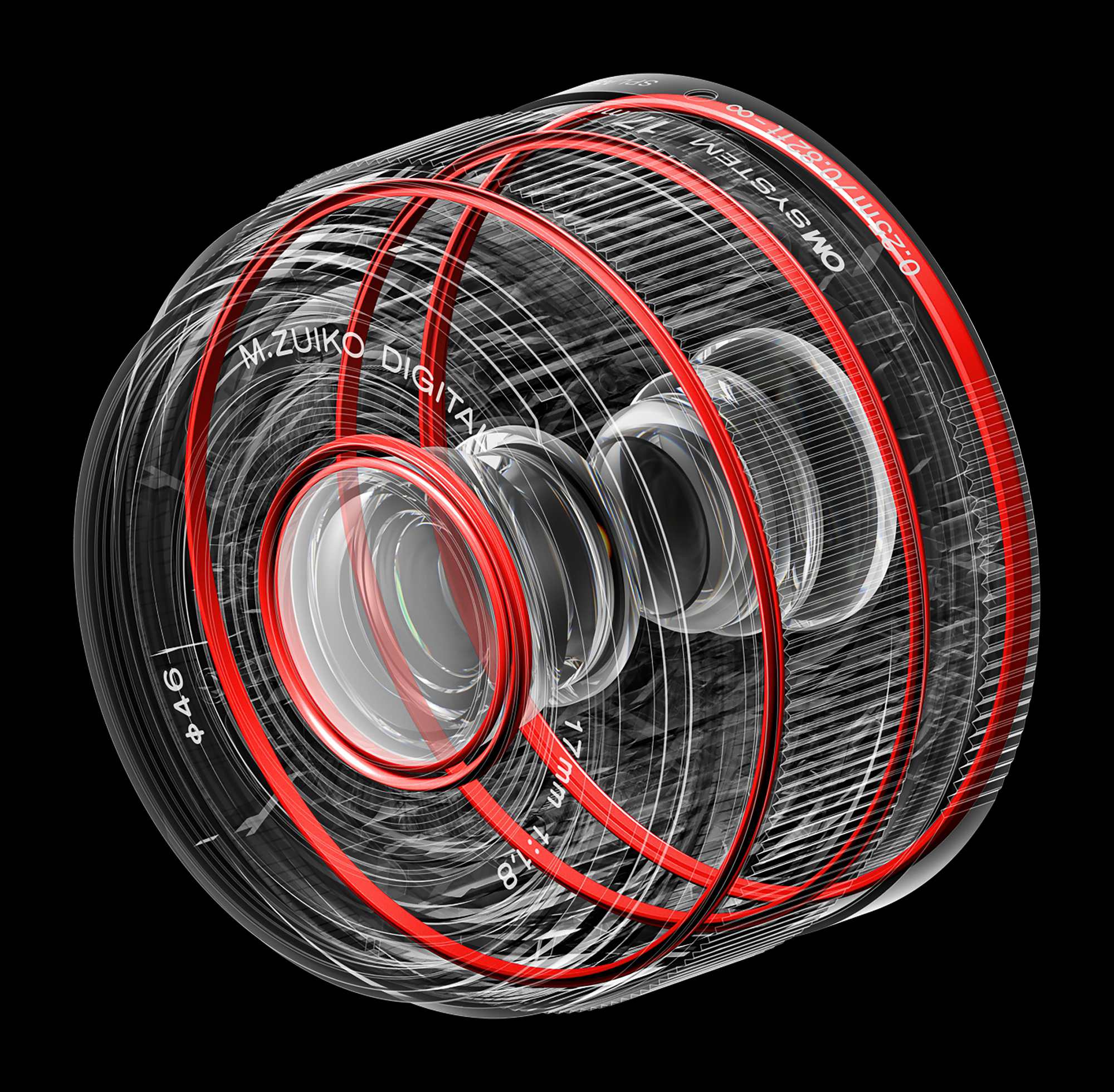
OM System looks to make the OM-3 distinctive and fun
OM System, the Micro Four Thirds system camera brand that was formerly the camera division of Olympus, has announced the OM-3, a retro film SLR-look mirrorless Micro Four Thirds camera. At the same time, OM System revealed new versions of its f/1.8 17mm (34mm full frame equivalent) and 25mm (50mm) primes, and an updated 100-400mm (200-800mm) f/5-6.3 tele-zoom.
This is not the first time we’ve seen an ‘OM-3’ – the film SLR of the same model designation was launched by Olymnpus back in 1983, and a Ti (Titanium body) version followed in 1994. While the original OM-3 was an all-manual camera, and a lot less sophisticated than the auto exposure OM-4, the new OM System OM-3 is a retro-styled, repackaged, version of the flagship OM-System OM-1 Mark II.

(above) OM film SLR fans will love the visual familiarity.

(above) The rear view of the OM-3 looks a lot more up to date than the front aspect.
The new OM-3 has that 42 year old OM family look, even eschewing a modern ergonomic hand grip. The OM-3 Ti did have an optional vestigial grip, so maybe that could be an option one day? The Micro Four Thirds OM-3 is only available in silver finish, which is odd because I’ve never seen a silver original OM-3, they ‘re either black or dark titanium grey.
Retro appeal
OM System is clearly aiming to repeat the retro appeal, nine years ago, of the digital Pen F, itself harking back to the film Pen F of the 1960s. This achieved niche enthusiast success but it’s not widely regarded as having been a big commercial success for Olympus. Nevertheless, Nikon and Fujifilm have produced their own retro digital cameras, and OM System is back in the same game, with the OM-3.
Setting aside the inevitable debate regarding sensor size, the OM-3’s deliberately dated exterior hides a sophisticated interior, much of it borrowed from the OM-1 Mark II. The 20 megapixel (Sony manufactured) LiveMOS sensor is a high-speed stacked BSI device, there are loads of computational photography modes, AI subject ID and tracking AF, and Micro Four Thirds boasts more lens options than any other mirrorless system.
Key differences to the flagship OM-1 Mark II include a lower resolution viewfinder with a slightly smaller magnification, the lack of a second memory card slot, no joystick control and a few less external buttons. However, the OM-3 has been endowed with a control on the front, where one might have once expected to find a self-timer lever, that let’s you choose colour modes aimed at reproducing film-like colour and black and white results. Fun fact – the original OM-3, strangely, didn’t have a self-timer lever.
The OM-3 is a bit cheaper than an OM-1 Mark II, although in some markets the price difference is surprisingly small. Some have speculated that the OM-3 is a replacement for the OM-5, which was a warmed over version of the OM-D E-M5 Mark III, which dates back to 2019. However, the OM-5 is cheaper, smaller, and has a plastic body. While both are dust and splash-resistant, the OM-3 has a magnesium alloy chassis.
Undeniably, the OM-3 has character, and retro panache, just like the Pen F from 9 years ago. It has appeal. Now OM System have to turn that appeal into sales.

(above) The m.Zuiko 100-400 f/5-6.3 IS II
 (above) m.Zuiko 100-400 f/5-6.3 II attached to an OM-1 Mark II body showing the environmental sealing (red)
(above) m.Zuiko 100-400 f/5-6.3 II attached to an OM-1 Mark II body showing the environmental sealing (red)
Revisions to three popular lenses
On to lenses, perhaps the most important news is the enhancement of the popular m.Zuiko 100-400 (200-800) f/5-6.3. This Mark II version now supports Sync IS, where the lens OIS works in tandem with camera in-body moving sensor image stabilisation, where the body supports Sync IS. There are no optical or external design changes, but the adoption of Sync IS will make a significant improvement to image stability, up to 7EVs of shutter speed, according to OM System. The 100-400 already had dust and splash-resistant sealing, but the Mark II now has a certified rating of IPX.
 (above) m.Zuiko 25mm f/1.8 II
(above) m.Zuiko 25mm f/1.8 II
 (above) m.Zuiko 17mm f/1.8 II
(above) m.Zuiko 17mm f/1.8 II
The m.Zuiko Mark II 17mm (34mm) f/1.8 has a completely new casing. Rather oddly, considering the introduction of the retro OM-3 body, OM System has modernised the look of the 17mm f/1.8, moving away from its retro-esque design, which has lasted for 13 years. This includes ditching a rather neat feature of selected m.Zuiko lenses, whereby if you pull back the focusing ring, you enable manual focusing instantly, via a focus clutch mechanism, and there is a depth of field guide relating to chosen f-stop. But at least the 17mm is now dust and splash-proofed.

Environmental sealing is also new for the m.Zuiko Mark II 25mm (50mm) f/1.8, which is also restyled, and looks similar to the 17mm II lens.

(above) here is a family shot of the current OM System lens Micro Four Thirds system. Add to this the extensive range of Panasonic Lumix/Leica Micro Four Thirds lenses, and independents, you have the largest range of lenses for a mirrorless system.
OM System says you will be able to buy an OM-3 from 27th February, priced £1699.
The lens pricing:
m.Zuiko 17mm f/1.8 II – £499
m.Zuiko 25mm f/1.8 II – £399
m.Zuiko 100-400mm f/5-6.3 II – £1299.99
For more details on the new products announced, today, by OM System, check out their website.
